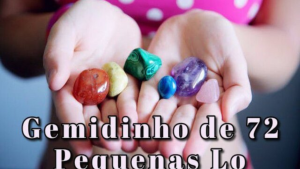Milia, often referred to as milialar, are tiny, benign cysts that typically appear on the skin’s surface. These small, white or yellowish bumps can occur on various parts of the body, most commonly on the face, cheeks, nose, and around the eyes. While they are generally harmless, understanding their causes, symptoms, and available treatments can help manage these skin imperfections.
Table of Contents
ToggleWhat Are Milia?
Milia are small cysts filled with keratin, a protein found in the outer layer of the skin, often referred to as the epidermis. They form when dead skin cells get trapped beneath the skin’s surface rather than exfoliating naturally. These trapped cells then clump together, forming the characteristic small bumps known as milia.
Types of Milia
- Primary Milia: These are the most common and typically occur in infants. They usually disappear on their own within a few weeks.
- Secondary Milia: These may develop in response to skin damage, such as burns, sun damage, or certain skin conditions.
Symptoms and Causes
Symptoms
- Small Bumps: Typically small, white or yellowish bumps on the skin’s surface.
- Localized Areas: Commonly found around the eyes, cheeks, nose, and other facial areas.
- Generally Painless: Milia are usually painless unless they become inflamed or irritated.
Causes
- Skin Cells: Trapped dead skin cells that fail to exfoliate naturally.
- Skin Damage: Burns, blistering injuries, or prolonged sun exposure.
- Use of Heavy Skincare Products: Some heavy creams or lotions might contribute to pore blockage.
Who Gets Milia?
Milia can affect people of all ages and skin types. However, they are more commonly seen in:
- Newborns: Often referred to as “milk spots” in infants, which typically resolve on their own.
- Adults: Particularly those prone to skin damage or who use heavy skincare products.
Treatment Options
Home Remedies and Prevention
- Gentle Exfoliation: Regular exfoliation with mild products can help prevent milia formation.
- Sun Protection: Use sunscreen to prevent sun damage that can contribute to milia formation.
- Avoid Heavy Products: Opt for non-comedogenic skincare products that won’t clog pores.
Medical Treatments
- Extraction: Dermatologists may use sterile tools to extract milialar, particularly if they’re persistent or bothersome.
- Topical Retinoids: Prescription creams containing retinoids can help speed up cell turnover, reducing the appearance of milia.
- Chemical Peels: Dermatological procedures involving chemical exfoliation can aid in removing milia.
Skincare and Lifestyle Approach
Skincare Routine
- Gentle Cleansing: Use a mild cleanser suitable for your skin type to prevent pore blockage.
- Moisturization: Opt for non-comedogenic moisturizers to keep the skin hydrated without clogging pores.
- Regular Exfoliation: Incorporate gentle exfoliation into your skincare routine to promote cell turnover.
Lifestyle Changes
- Healthy Diet: A balanced diet rich in vitamins and minerals may contribute to overall skin health.
- Sun Protection: Always use sunscreen to shield the skin from harmful UV rays.
Consulting a Dermatologist
If milia persist, become painful, or multiply significantly, consulting a dermatologist is advisable. They can provide a tailored treatment plan based on individual skin type and the severity of the condition.
Conclusion
Milia, while generally harmless, can affect individuals of all ages. Understanding the causes, symptoms, and available treatments is essential for managing and preventing their occurrence. Adopting a gentle skincare routine, protecting the skin from damage, and seeking professional advice when needed are key steps toward maintaining healthy, clear skin.
More Stories
From Fear to Freedom: Understanding and Managing Panic Attacks
What Are Panic Attacks? Panic attacks are sudden periods of intense fear or discomfort that peak within minutes. These episodes...
Unlocking a New You: The Complete Guide to Hair Transplant in Dubai
In recent years, Dubai has become a hotspot for medical tourism, particularly for cosmetic procedures. Among these, hair transplants have...
Batana Oil Benefits: A Hidden Gem for Hair and Skin Care
Batana oil, often referred to as "liquid gold" for hair and skin, is one of nature’s best-kept secrets. Extracted from...
How to Choose the Best Steroid Cycles for Cutting Safely and Effectively
The key to getting ultra lean is the best steroid cycles for cutting. The cutting phase is one at which...
Revolutionizing Addiction Recovery: The Rise of Virtual Suboxone Treatment
Addiction treatment has long been a challenge for both patients and providers, requiring access to specialized care and consistent support....
Optimize Your Wellness with Health Hub Singapore: The Ultimate Health Resource
In a rapidly evolving world where health and well-being are increasingly prioritized, having access to a trusted source of quality...


